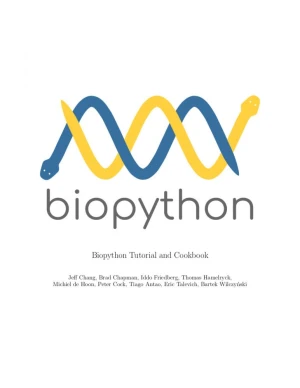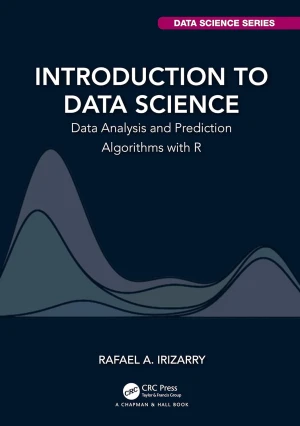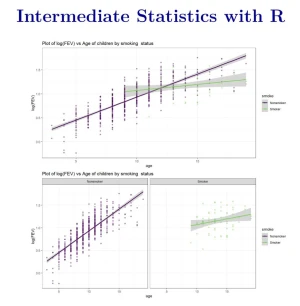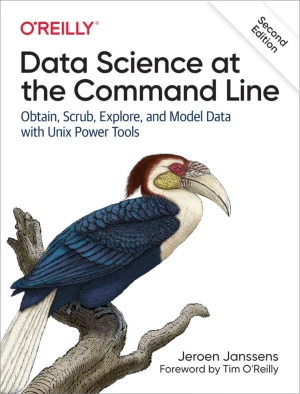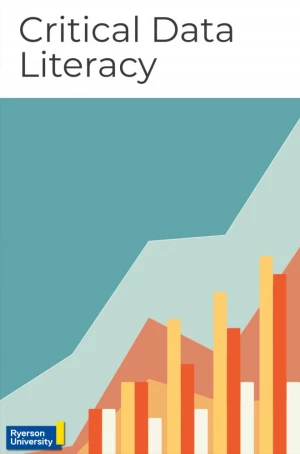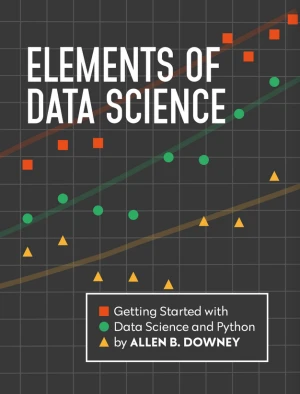OpenIntro Statistics, 4th Edition
A complete foundation for Statistics, also serving as a foundation for Data Science.
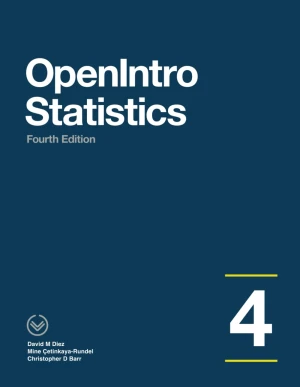
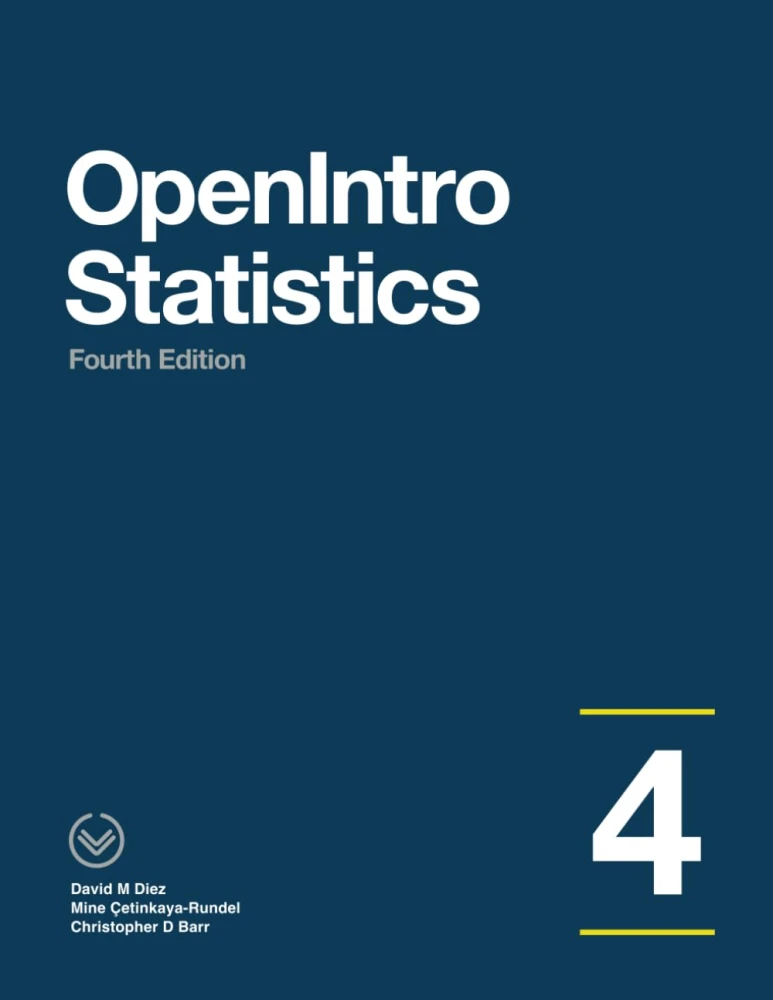
Book Details
| Authors | David Diez, Mine Cetinkaya-Rundel, Christopher Barr |
| Publisher | OpenIntro |
| Published | 2019 |
| Edition | 4th |
| Paperback | 422 pages |
| Language | English |
| ISBN-13 | 9781943450077 |
| ISBN-10 | 1943450072 |
| License | Creative Commons Attribution-ShareAlike |
Book Description
OpenIntro Statistics provides a traditional college-level introduction to the field of statistics. This widely adopted textbook offers an exceptional and accessible foundation for a diverse range of students, from those at community colleges to attendees of Ivy League institutions. It is estimated that approximately 20,000 students use this thoroughly vetted textbook annually.
The book covers a first course in statistics, delivering a rigorous yet clear, concise, and accessible introduction to applied statistics. Although it was written with the undergraduate level in mind, it is also popular in advanced high school courses and certain graduate programs.
The authors intend for readers to take away three key ideas in addition to forming a foundation of statistical thinking and methods:
- Statistics is an applied field with a wide range of practical applications.
- One does not need to be a math expert to learn from real, interesting data.
- Data are messy, and statistical tools are imperfect. However, when one understands the strengths and weaknesses of these tools, they can be used to learn about the world.
The chapters of the book are structured as follows:
- Introduction to data: Data structures, variables, and basic data collection techniques.
- Summarizing data: Data summaries, graphics, and a teaser of inference using randomization.
- Probability: Basic principles of probability.
- Distributions of random variables: The normal model and other key distributions.
- Foundations for inference: General ideas for statistical inference in the context of estimating the population proportion.
- Inference for categorical data: Inference for proportions and tables using the normal and chi-square distributions.
- Inference for numerical data: Inference for one or two sample means using the t-distribution, statistical power for comparing two groups, and comparisons of many means using ANOVA.
- Introduction to linear regression: Regression for a numerical outcome with one predictor variable.
- Multiple and logistic regression: Regression for numerical and categorical data using many predictors.
This book is available under a Creative Commons Attribution-ShareAlike license (CC BY-SA), which means that you are free to copy, distribute, and modify it, as long as you credit the original author and license any derivative works under the same terms.
If you enjoyed the book and would like to support the author, you can purchase a printed copy (hardcover or paperback) from official retailers.
Download and Read Links
Share this Book
[localhost]# find . -name "*Similar_Books*"
Biopython: Tutorial and Cookbook
Biopython is a collection of freely available Python modules for computational molecular biology. Python is an object oriented, interpreted, flexible language that is widely used for scientific computing. Python is easy to learn, has a very clear syntax and can easily be extended with modules written in C, C++ or FORTRAN. Since its inception in 200
Introduction to Data Science
Introduction to Data Science: Data Analysis and Prediction Algorithms with R introduces concepts and skills that can help you tackle real-world data analysis challenges. It covers concepts from probability, statistical inference, linear regression, and machine learning. It also helps you develop skills such as R programming, data wrangling, data vi
Intermediate Statistics with R
Introductory statistics courses prepare students to think statistically but cover relatively few statistical methods. Building on the basic statistical thinking emphasized in an introductory course, a second course in statistics at the undergraduate level can explore a large number of statistical methods. This text covers more advanced graphical su
Data Science at the Command Line, 2nd Edition
This thoroughly revised guide demonstrates how the flexibility of the command line can help you become a more efficient and productive data scientist. You'll learn how to combine small yet powerful command-line tools to quickly obtain, scrub, explore, and model your data. To get you started, author Jeroen Janssens provides a Docker image packed wit
Critical Data Literacy
A short course for students to increase their proficiency in analyzing and interpreting data visualizations. By completing this short course students will be able to explain the importance of data literacy, identify data visualization issues in order to improve their own skills in data story-telling. The intended outcome of this course is to help s
Elements of Data Science
Elements of Data Science is an introduction to the practical skills of working with data, written for people with no programming experience. Concepts are explained clearly and concisely, and exercises in each chapter demonstrate the real-world use of each feature. - Step-by-Step Approach: Learn how to execute a data science project from start to fi

